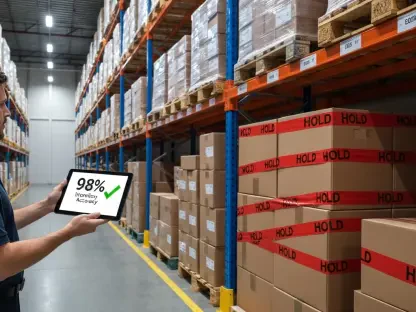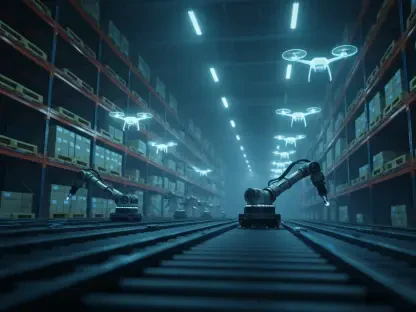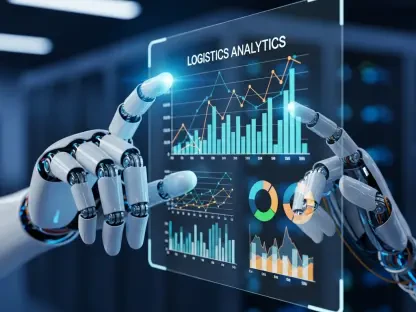The integration of humanoid robots in factories and warehouses is gaining momentum, heralding a new era in automation. As industries seek to enhance productivity and minimize costs, humanoid robots present a transformative solution. These robots, modeled after human physiology, are designed to perform tasks traditionally carried out by manual labor. Their potential for increased efficiency and precision, coupled with advances in artificial intelligence (AI), positions them as formidable assets in industrial settings. Beyond their practical benefits, humanoid robots embody advancements in technology that promise substantial changes across various sectors, reshaping operational dynamics and driving innovation.
Adoption in Automotive and Logistics Industries
Historical Roots and Current Trends
The automotive and logistics sectors have a storied history of embracing automation, often leading technological advancements that have set industry standards. From the early days when mobile robots and industrial arms first appeared, there’s been continuous evolution toward more sophisticated automation tools. Presently, humanoid robots are the focal point of this evolution, with leading automotive OEMs and warehouse operators advancing their deployment strategies. Companies such as Tesla and BYD are at the forefront, aiming to ramp up humanoid robotics in their operations significantly. Projections indicate that by 2035, 1.6 million humanoid robots will be deployed in automotive manufacturing facilities alone. This marks a pivotal shift, underscoring their strategic importance in complementing existing systems with enhanced AI capabilities.
Strategic Advantages and Revenue Streams
The strategic adoption of humanoid robots is not solely driven by innovation—it stems from their capacity to unlock new revenue avenues and operational efficiencies. These robots can integrate effectively with existing factory layouts due to their human-like shapes, simplifying their incorporation into current production lines. Moreover, leveraging overlapping supply chains elevates their commercial viability, allowing for economical scaling. As costs plummet to approximately $20,000 per unit, a broader commercialization across various industry landscapes becomes feasible. Consequently, these robots are envisioned as new profit centers, with their integration promising marked improvements in production agility and scale.
Challenges and Future Considerations
Technological Barriers in Logistics
In logistics and warehousing, humanoid robots hold promise, yet their adoption remains below expectations due to prevailing technological and economic hurdles. Labor shortages and complex operational demands push the need for precise, consistent solutions, tasks at which humanoid robots excel. Despite their advantages, challenges persist in terms of battery life, recharge times, and cost, which collectively contribute to considerable downtime. As of now, adoption figures linger below 5%, reflecting the industry’s cautious approach. Companies such as Amazon are notably engaging in extensive pilot periods, lasting around 18 months, to ascertain viability before large-scale deployments. Fast-charging innovations offer potential alleviation, albeit with concerns surrounding increased operational expenses.
Path to Widespread Use
Widespread adoption of humanoid robots in these sectors hinges on successfully navigating existing barriers and a commitment to thorough field testing. With advancements needed to refine battery performance and cost efficiency, the industry faces a future challenge requiring strategic investment and technological breakthroughs. Focused efforts in improving these variables could progressively drive acceptance and integrate humanoid robots as standard technology in operational practices. Collaboration between innovators, manufacturers, and users will be crucial in overcoming these hurdles, paving the way for these robots to redefine what efficiency and productivity mean in modern industrial environments.
Looking Forward
The rise of humanoid robots in factories and warehouses is signaling a significant shift towards advanced automation. As companies endeavor to boost efficiency and cut down expenses, humanoid robots offer a revolutionary solution. Designed to mimic human anatomy, these robots are adept at tasks traditionally performed by human workers, promising greater accuracy and productivity. Thanks to advances in artificial intelligence (AI), these machines bring unparalleled capabilities to industrial environments. Not only do humanoid robots enhance operational performance, but they also represent technological progress that is set to bring profound changes to diverse sectors. As they reshape how industries operate, humanoid robots are poised to drive innovation, transforming traditional workflows and strategies. Their adoption underscores a commitment to modernizing production processes and embracing cutting-edge advancements, ultimately redefining the landscape of automation for a future that is both efficient and innovative.









